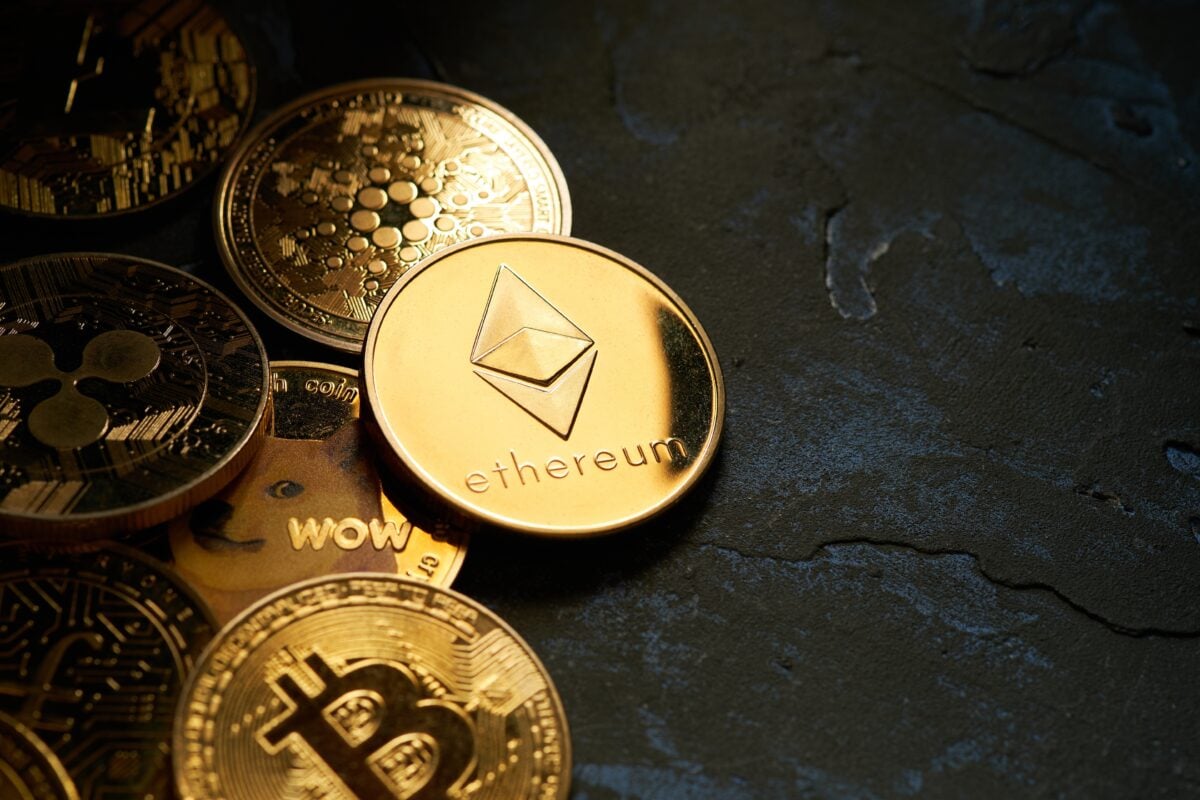TLDR
- Stablecoin retail transfers under $250 hit record $5.8 billion in August 2025, already surpassing all of 2024’s volume
- Binance Smart Chain captured nearly 40% of retail stablecoin activity while Tron lost market share
- Ethereum’s total stablecoin supply reached all-time high of $165 billion after adding $5 billion in one week
- Survey shows 70% of users in emerging markets use stablecoins more than last year to avoid banking fees
- Ethereum maintains 57% market share of all stablecoins and 77% of tokenized commodities
Stablecoin adoption has reached new heights in 2025, with retail transactions and total supply breaking multiple records. The digital currency market tied to traditional assets like the US dollar continues expanding across different blockchain networks.
Retail stablecoin transfers under $250 reached $5.84 billion in August alone, according to a CEX.io report citing Visa and Allium data. This marked the highest monthly volume ever recorded for consumer-sized transactions. With four months remaining in 2025, the year has already exceeded 2024’s total retail stablecoin volume.

The growth reflects increasing adoption in emerging markets where users seek alternatives to traditional banking. A survey of over 2,600 consumers across Nigeria, India, Bangladesh, Pakistan and Indonesia found most respondents use stablecoins to avoid high banking fees and slow transfer times. Nearly 70% reported using stablecoins more frequently than the previous year.
The competitive landscape among blockchain networks has shifted this year. Tron, traditionally popular for retail transfers due to low fees and USDT support, lost market share with monthly transaction counts falling by 1.3 million. Its volume growth lagged behind competitors despite maintaining its position as a major network.
Binance Smart Chain emerged as the top choice for retail users, capturing nearly 40% of retail stablecoin activity. The network’s transaction count jumped 75% this year with transfer volume rising 67%. Much of this momentum followed Binance’s March decision to delist USDT for European users and renewed memecoin trading on PancakeSwap.
Network Performance Drives Growth
Ethereum maintained its dominant position while expanding retail accessibility. The Ethereum ecosystem, including its base chain and layer-2 networks, accounted for over 20% of transfer volume and 31% of transaction counts. Sub-$250 transfers on Ethereum’s mainnet rose 81% in volume and 184% in count.
The stablecoin supply on @ethereum reaches $165 billion, marking an all-time high.
Ethereum added ~$5 billion in new stablecoins over the past week, i.e. ~$1 billion per weekday. pic.twitter.com/hZAPDSUV76
— Token Terminal 📊 (@tokenterminal) September 7, 2025
The mainnet’s improved competitiveness stems from transaction costs dropping more than 70% over the past year. This made Ethereum viable for smaller transactions previously dominated by lower-cost networks. Layer-2 solutions continued handling the majority of small transfers while the mainnet gained retail users.
Ethereum’s stablecoin supply reached an all-time high of $165 billion after adding approximately $5 billion in new stablecoins over one week. Token Terminal reported this total has more than doubled since January 2024. Different data providers show slight variations, with RWA.xyz reporting $158.5 billion, but all confirm record levels.
Market Share and Competition
Ethereum commands 57% market share of all stablecoins, significantly ahead of its nearest competitor. Tron holds 27% market share while Solana maintains less than 4%. This distribution reflects user preferences for network stability and institutional support.
Beyond stablecoins, Ethereum leads in tokenized assets with $2.4 billion worth of tokenized gold on the network. This represents a doubling of supply year-to-date and another all-time high. The network holds 77% market dominance for tokenized commodities, rising to 97% when including layer-2 Polygon.
Financial institutions continue choosing Ethereum for tokenized products. Fidelity launched its Digital Interest Token (FDIT) on September 1, reaching $203.6 million in total asset value. The fund represents traditional finance’s ongoing move toward blockchain-based financial instruments.
Treasury corporations have accumulated almost 4% of Ethereum’s entire supply in five months. This institutional adoption has supported ETH prices, which rose over 200% since April to approach $5,000 in late August.





